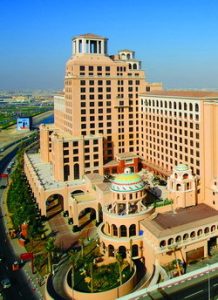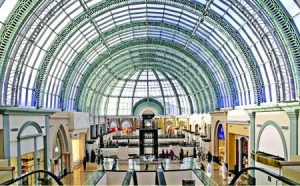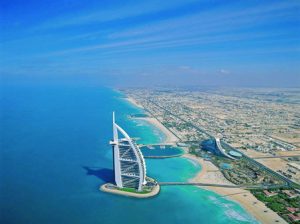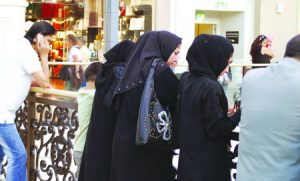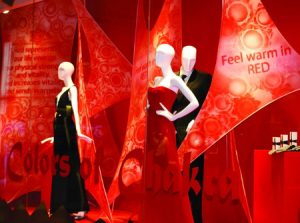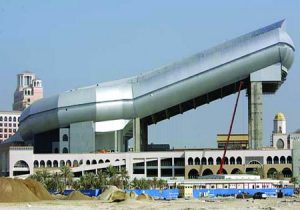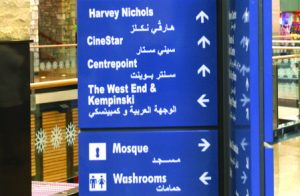In Dubai, numbers speak louder than words.
Earlier this year, the emirate on the Persian Gulf hosted the annual convention of The Middle East Council of Shopping Centres. I was one of a number of international speakers asked to discuss retail industry trends, strategies, challenges, case studies and the like. And we all did, to appreciative response.
But the speaker who really grabbed the attention of the delegates – mall owners and developers, leasing and property managers, retailers, consultants, investors, accountants, government officials and industry suppliers from about 20 countries in the region – was Phil McArthur, managing director of shopping centers and commercial real estate for Al Futtaim Group, a conglomerate with its hand in many market segments in the United Arab Emirates.
McArthur’s presentation, “Middle East Mega Projects: An Overview of the Middle East Retail Development Scene,” was a straightforward set of statistics highlighting recently completed projects in the area and those on the drawing boards. The word “mega” should have tipped off the expectations of the attendees. Because in this booming, growing, expanding part of the world, “big” is no longer acceptable if “bigger” is available. And “bigger” is not nearly as good as “biggest.”
Not that you need charts to evaluate the extraordinary building boom going on in Dubai. All you have to do is walk around the palm-lined avenues and look at the horizon, where a massive flock of construction cranes is whirring, lifting, moving and building. About 20 percent of all the cranes operating in the world are at work in Dubai City, erecting the tallest building, the most expensive hotel, the next biggest shopping mall/theme park and an extraordinary complex of man-made islands in the gulf that, from the sky, take the shape of palm trees, big enough to be visible from a satellite.
Mall of Arabia will be the region’s biggest shopping center when it’s completed this year as part of Dubailand, a dinosaur-focused theme park. Why dinosaurs? Well, what’s bigger?
Advertisement
However, Dubai Mall, which is under construction with an expected 2008 completion date, is expected to be larger yet – in fact, the largest shopping mall in the world. It will cover a total area of more than 12 million square feet and house more than 1000 stores. Other featured attractions will include the world’s largest gold souk (Arab for “market”) and one of the world’s largest aquariums.
“Dubai is a country that worships pushing the edge,” McArthur says. “Nothing seems beyond its grasp.”
Reach for the Sky
Dubai can afford to build whatever it wants. Like the rest of the U.A.E., prosperous Dubai sits on a shelf of crude oil. But revenues from petroleum and natural gas contribute less than 3 percent to its $46 billion economy. Most of the revenues are from shipping (it has the largest man-made harbor in the world), foreign investment (spurred by favorable tax benefits and other incentives) and, increasingly, from tourism. Dubai International Airport is the 17th-busiest in the world. Typical of Dubai, though, this modern airport will be superceded next year by the bigger Dubai World Central International Airport, able to support the Superjumbo Airbus A380, the largest passenger airliner in the world.
Nearly 29 million passengers pass through the airport a year. Of course, the passenger jets fly out of Dubai as well, taking wealthy Arabs to visit the centers of Europe, for business but also to indulge their taste for Western luxury goods. Despite their outwardly modest dress, Dubaian women have a lot of disposable cash and love the European brands, even if they wear them only in private or under their head-to-toe kandouras, and they demand that those brands be available to them at home, as well.
Dubai’s current showplace for this indulgence is the 425-store, 2.5 million-square-foot Mall of the Emirates, reputed to be the largest shopping center in the world outside of North America. It’s vast and opulent, with architecture that suggests Arab sensibilities and Moorish influences along with the Dubaian taste for soaring spaces.
Advertisement
The crowd is a mix of Arab families in their cultural robes; Arab families in Levi’s and Gap T’s; and travelers from the West. About 25 percent of the mall’s traffic (and 33 percent of its sales) comes from tourists, according to marketing manager Alan Jones. The rest is local. The mall is lined with the same fashion brands you’d see in London, Paris, Milan or New York: Louis Vuitton, Cartier, Burberry, Armani, Bulgari, Marc Jacobs, Ralph Lauren. The law stipulates no foreign ownership of Dubaian businesses, so everything is franchised to local entrepreneurs, but the look and feel of the stores is the same as on Madison Avenue.
So are the store windows. It’s noteworthy that the dominant graphics, both in the mall and in the stores, feature blonde, Caucasian models. So do the mannequins in the windows and ads in the newspapers. “Dubaian culture honors Arab traditions,” says Jones, “but at the same time it reveres the notion of Western prestige. Dubaians want it clear that they can afford to shop at Harvey Nichols or Versace, just like the fair-skinned Europeans do.”
Trouble in Paradise
Currently under construction, the Burj (Tower of) Dubai will be the tallest building in the world, more than twice the height of the Empire State Building. But wait: Al Burj, now under development less than 30 miles away, might be higher by the time it’s completed in 2009.
Then there’s the new airport, the new mall, developments along the waterfront, new hotels to accommodate the tourists and a new international trade center.
All this growth is not without a price, however. Traffic can be crushing, especially at rush hour. One eight-lane highway, Sheikh Zayed Road, shoulders most of the city’s traffic burden.
Advertisement
More troubling, working conditions are wretched. Dubaians invest, shop, spend, play and build, but they don’t do manual work. Instead, the unskilled labor force comprises more than 250,000 immigrants – mostly from India, Pakistan, Bangladesh and the Philippines – who labor around the clock for low wages and live in substandard housing, raising human rights issues that have caught the attention of the world’s media. National Public Radio recently reported that workers typically live eight to a room. The BBC said construction workers sometimes go unpaid for months on end. And if they leave the country to go home, they lose the money they say they are owed.
And the unregulated work can be rushed, often careless and dangerous. This spring, a fire at a construction site caused by questionable use of flammable materials injured several workers. In January, four workers were killed when a fire broke out at another building site in Dubai, prompting calls for an improvement in safety standards. In 2006, construction workers at the Burj Dubai rioted over lack of safety.
Still, the sheikhs invest, the architects plan and the cranes move massive amounts of earth. Rival city Abu Dhabi, capital of the U.A.E., is beginning to build towers, malls, theme parks and mixed-use developments, spurring competitive Dubai to yet more, like an underwater hotel called Hydropolis and a 59-story office tower that spirals around itself, each floor rotating individually.
Why? Because it can.
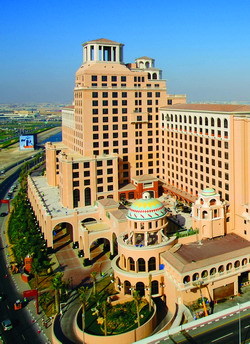

 Photo Gallery1 week ago
Photo Gallery1 week ago
 Headlines3 days ago
Headlines3 days ago
 Headlines1 week ago
Headlines1 week ago
 Headlines1 week ago
Headlines1 week ago
 Designer Dozen2 weeks ago
Designer Dozen2 weeks ago
 Headlines1 week ago
Headlines1 week ago
 Designer Dozen6 days ago
Designer Dozen6 days ago
 Headlines1 week ago
Headlines1 week ago
